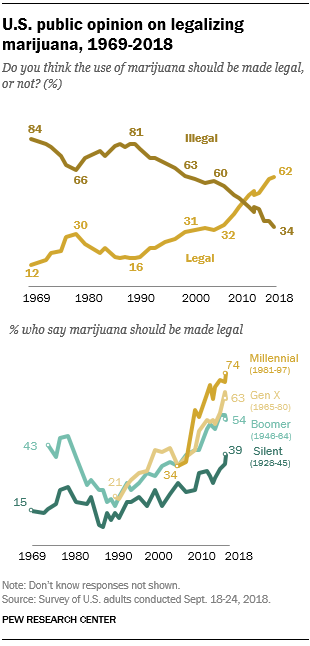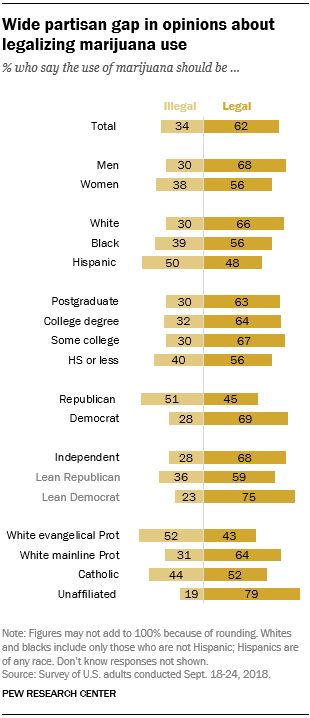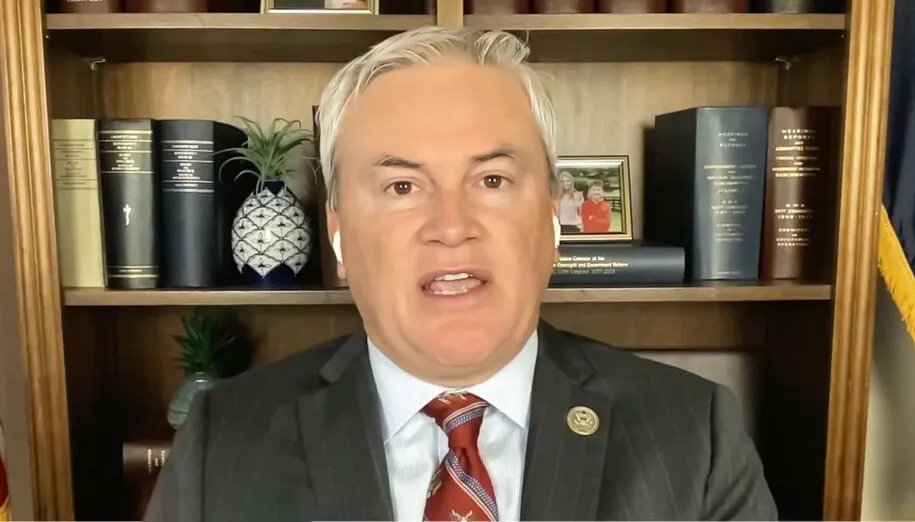 About six-in-ten Americans (62%) say the use of marijuana should be legalized, reflecting a steady increase over the past decade, according to a new Pew Research Center survey. The share of U.S. adults who support marijuana legalization is little changed from about a year ago – when 61% favored it – but it is double what it was in 2000 (31%).
About six-in-ten Americans (62%) say the use of marijuana should be legalized, reflecting a steady increase over the past decade, according to a new Pew Research Center survey. The share of U.S. adults who support marijuana legalization is little changed from about a year ago – when 61% favored it – but it is double what it was in 2000 (31%).
As in the past, there are wide generational and partisan differences in views of marijuana legalization. Majorities of Millennials (74%), Gen Xers (63%) and Baby Boomers (54%) say the use of marijuana should be legal. Members of the Silent Generation continue to be the least supportive of legalization (39%), but they have become more supportive in the past year.
Nearly seven-in-ten Democrats (69%) say marijuana use should be legal, as do 75% of independents who lean toward the Democratic Party.
Republicans are divided, with 45% in favor of legalizing marijuana and 51% opposed. Still, the share of Republicans saying marijuana should be legal has increased from 39% in 2015. Independents who lean toward the Republican Party are far more likely than Republicans to favor marijuana legalization (59% vs. 45%).
 The growth in public support for legal marijuana comes as a growing number of states have legalized the drug for medical or recreational purposes in recent years.
The growth in public support for legal marijuana comes as a growing number of states have legalized the drug for medical or recreational purposes in recent years.
Nine states and the District of Columbia have legalized the drug for recreational purposes, according to the National Conference of State Legislatures. More than half the states (31) – plus the District of Columbia, Guam and Puerto Rico – have legalized it for medical purposes. Marijuana remains illegal under U.S. federal law.
The list of states that have legalized marijuana could expand this November. Voters in Michigan and North Dakota will decide whether to allow recreational use, while those in Missouri and Utah will decide on medical use. In Utah, Gov. Gary Herbert announced this month that he would call a special session in November to debate a different medical marijuana proposal, regardless of how the ballot measure turns out.
Note: This is an update of a post originally published Jan. 5, 2018. The full topline for this post can be found here (PDF), and the methodology is here.
Cross-posted with permission from the Pew Research Center. Written by Hannah Hartig and Abigail Geiger. Hannah Hartig is a research analyst focusing on U.S. politics and policy at Pew Research Center.
Abigail Geiger is an associate digital producer and writer for Pew Research Center.
[thrive_leads id=’3262′]
–30–
Comments






